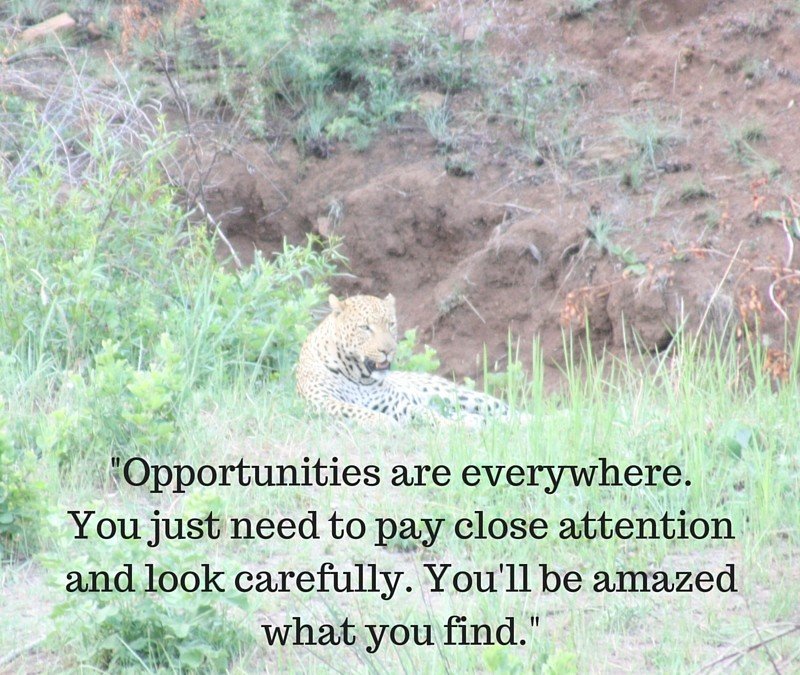
by Julia Felton | Feb 17, 2016
I’m sending you this weeks Wednesday Wisdom from the heart of the African Bush where I am co-running some events for Entrepreneurs Institute. Apologies for the delay but internet signal here is limited. This week’s insight is all about Opportunities because Opportunities are everywhere if we are just present and open to them.
I’ve now been in Africa for three days and done four game drives. What I have realised is that as each day goes by I become more grounded, present and aware. On the first day my focus was so narrow that I could barely see any animals, but as each day passes my periphery vision improves and now I’m starting to see animals that the Ranger hasn’t seen yet. Also on the first game drive I could only see big animals but this morning I started to notice all the butterflies and birds flying around.
You see the animals (aka opportunities) are all around us you just have to open your eyes to see them. Sometimes we are so focused on the big win, or the thing right in front of our nose, that we fail to see other opportunities lurking in the background. That is exactly what happened last night. We were so excited to see a Waterbuck, as we hadn’t seen one before, that we nearly missed seeing this leopard that was lying down in the undergrowth.
I wonder what opportunities are surrounding you that you are failing to see? So for today just slow down and stop, and really look around you. You might be amazed at what you are missing that is right beside you.
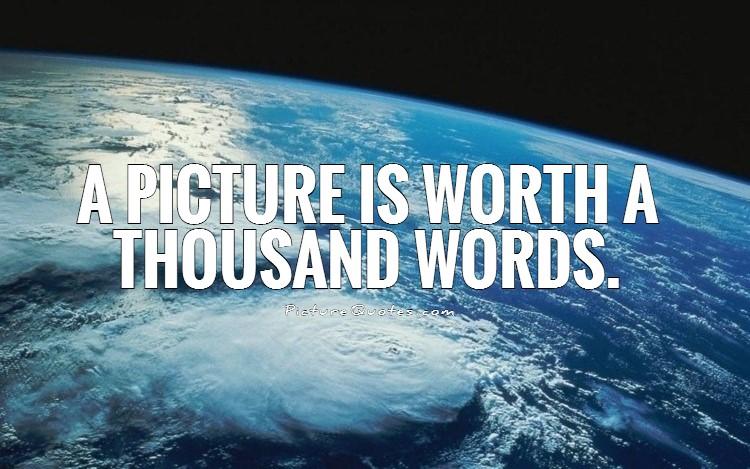
by Julia Felton | Feb 11, 2016
The adage goes that “a picture is worth a thousand words”, so therefore I’m curious to know what you think about this picture. What message do you think I was being sent when it arrived in my inbox? And how do you think I reacted?

We often totally under-estimate the power of non-verbal communication in our society and yet non-verbal communication is an essential component of everyday life. We can convey a simple or complex message very succinctly with how we show up.
If we are feeling bored and unenthusiastic at work our body posture will probably express this with folded arms, rounded shoulders and generally looking glum and sad. Contrast this with a team member who is happy and in flow enjoying their job. They probably have a spring in their step, are literally walking on air and have a happy countenance.
How we BE at work and in life shapes how people interact with us and therefore the experiences we have. Sure words are important, but only up to a point as research shows that our body language and tonality have a much greater impact on the impression we make than anything else.
So how do you think I responded when I received this. Well of course I laughed and immediately saw the funny side of how my actions were stopping one of my colleagues getting on with her work. What might have become a heated conversation – her chasing me for something I hadn’t completed – got deflected with with one simple image.
So how can you use non-verbal communication to convey your message in a fun and innovative way?. I’d love to hear what you are doing.
And of course if you want to learn non-verbal communication from horses, who are masters at this, then look out for my Art of Communication workshop that up soon. You can find all the details here.
Have an inspired rest of the week.
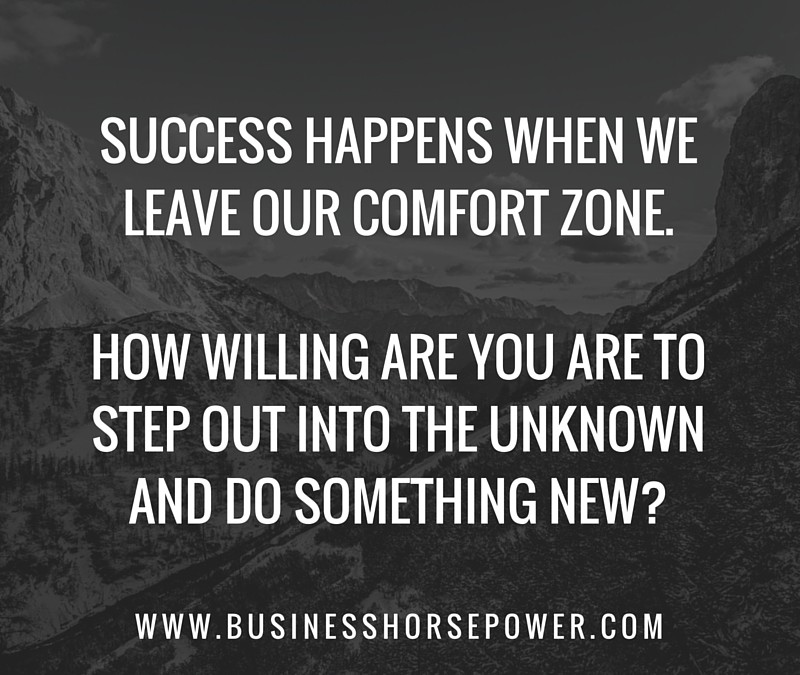
by Julia Felton | Jan 27, 2016
One of the things I always challenge my clients to do is to step out of their comfort zone and try something new. For many people just coming to an experience with the horses is the start of that stretch. In fact sometimes just the mere thought of doing this can send people into a tail spin.
That was certainly the experience of some of our clients earlier this month. As soon as they learnt that the next module of their leadership programme was with horses all kinds of doubts and fears set in. To the extent that three people actually cancelled their attendance at the event.
It always surprises me the reaction of people to the leadership work with horses. Some totally embrace it and see the experience as a stretch and to try something new outside their comfort zone, whilst for others it puts them into a state of fear and panic.
The one thing that I do know from personal experience is that unless we challenge ourselves to do something new, we never grow and develop. We never expand and change.
Now I also appreciate that everyone’s comfort zone is different and as a skilled facilitator we need to manage the experience and so not take people into a place of paralysis and fear, but rather move them forward step by step so that their own personal comfort zone expands. Because ironically what happens is that if we don’t stretch and challenge ourselves our comfort zone becomes smaller and smaller.
Last night I stretched myself ou of my comfort zone by holding my book launch at the Institute Of Directors in London. I would describe myself as a pretty accomplished speaker but to be honest I have always spoken supported by a powerpoint presentation. Last night no powerpoint was allowed. When I first heard this I was afraid that I wouldn’t know what to say and momentarily thought about pulling out. But I didn’t. I “pulled on my big girl panties” and stepped into the spotlight. And you know what. With no notes to distract me I got really connected to my audience and delivered one of the best talks I have done in long time.
I am now so grateful for that experience as it has helped me prove to myself that I do not need the crutch of a powerpoint presentation to deliver compelling and inspiring content.
So what are you going to do today to step out of your comfort zone and do something different?. I’d love to hear about it on the facebook group.
Have an inspired rest of the week.
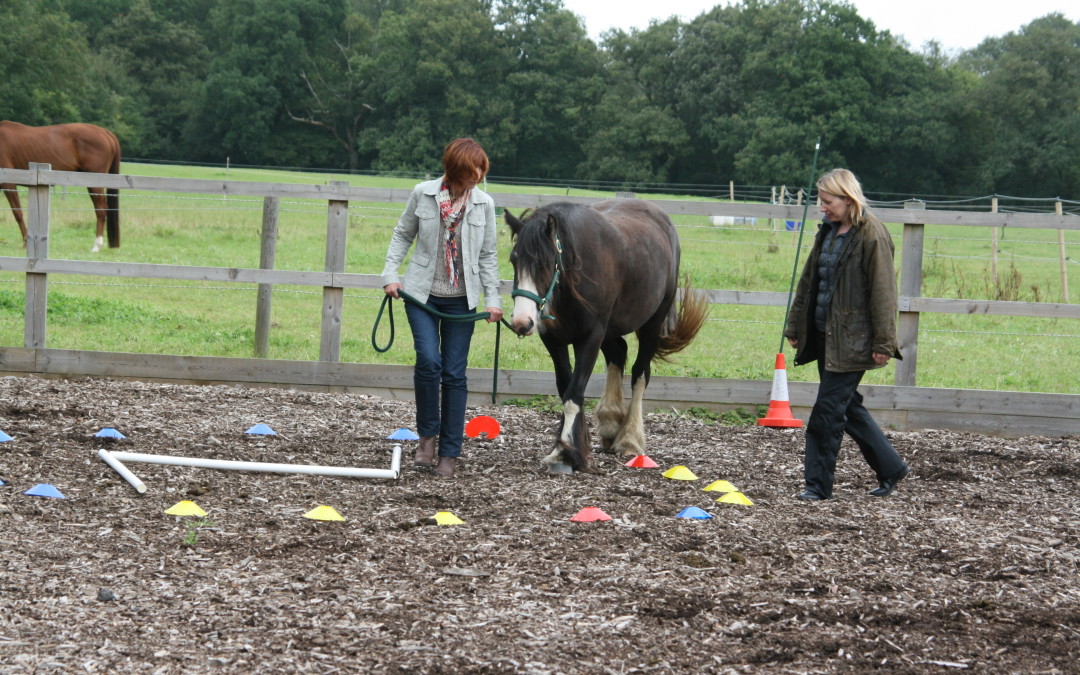
by Julia Felton | Dec 13, 2015
In a recent Fastcompany article 6 Ways Work Will Change In 2016 the author examines the traits that leaders will need for 2016. Specifically it cites:
“Leaders have traditionally been selected based on experience and company loyalty, but those leading today’s biggest organizations aren’t necessarily those who have spent the most time climbing the corporate latter. That’s because the very nature of management has drastically changed in recent years, resulting in a new set of expectations for those at the top.”
Furthermore Josh Bersin of Deloitte notes that “Most companies, even big companies, are much less hierarchical and much less top-down in their execution than they used to be. Leaders are finding that they have to be more inspirational, they have to be more collaborative……. the gap that’s being created is, ‘Who are the right leaders?”
So how do companies develop leaders for the next year who are more inspiring and collaborative?
I address this issue in my book The Alchemy of Change and this is what I say:
“I do suggest that all my clients engage in learning leadership from horses. Now some of you might think that this sounds strange but as we have seen you can’t learn leadership in the classroom. It is an embodied process that can only be experienced through being. Partnering with horses allows people to experience first hand many of the qualities of how to lead with courageous impact. Horses teach us how to be authentic, trustworthy, present, pay attention and be respectful and responsible. Horses model for us how to collaborate and share leadership. They show us how to build relationships and live in harmony with a shared common purpose.
How specifically you be a leader and how you act is as unique and personal to you as your DNA. How I lead is not how you might lead. Our differing perspectives, experiences and frame of reference make learning how to lead a very personal experience. There is no manual to follow, no one formula to follow. The one thing I do know however is that horses will provide you with real honest feedback on how effective your leadership has been. If you are not compelling and inspiring they simple won’t want to be with you, and unlike team members they will vote with their hooves and not engage. This is the power of learning leadership with horses as it allows you to explore what approaches work and which don’t and then to calibrate and try something new based on the feedback. Just like your team members’ horses are individuals and each one needs to be led differently. If you don’t believe me just try it and experience this for yourself.”
So what will you do differently to develop your leadership skills in 2016? If you’d like to really step out of your comfort zone and trying something innovative and new that really yields results then I suggest that you connect with me so that we can explore what is the best option for you.

by Julia Felton | Nov 27, 2015
Just because you have the title of leader doesn’t make you are a leader. And just because you don’t have the title of leader doesn’t mean you aren’t a leader. To my mind everyone in the organisation is a leader which is why in my new book The Alchemy Of Change: The Key To the Future Lies In The Past I explore the concept of Shared Leadership.
So what is Shared Leadership?
Shared Leadership is the concept that, given the rapidity of change, there is no way one person can know about everything in the business. For a business to be successful, leadership and decision making needs to be shared.
The old paradigm of command and control leadership simply won’t serve us in this The Big data era, where collaboration is a necessity. There is simply too much going on for one leader to be able to manage it all. This in itself creates blind spots for businesses, which is why a more flatter, more collaborative style of leadership, which is more responsive is required.
When Shared Leadership is adopted within the organisation then everyone looks out for the needs of the businesses, not in a self-serving ego way, but from a place of contribution to the community. Everyone is focused on the goal and works as a team to achieve this. It always surprises me that business has not taken a leaf from the world of sport. In a sports team there is no place for individual performance. Success only comes from the collective performance of the team.
The famous basketball player Michael Jordan knew this when he said: “Talent wins games but teamwork and intelligence wins championships”. Michael understood the power of collaboration and how only by all team members working together could the team win the game.
Interestingly, herds of wild horses also understand the power of Shared Leadership. The herd is structured with two leaders – the lead mare and the stallion – and they work in collaboration to keep the herd safe. They seek out food, water and shelter for the herd but the herd members do not solely rely on the leaders to keep them safe. Every herd member has a responsibility to maintain the safety of the herd and so contribute to its survival.
The herd has a shared purpose and focus, which quite simply is to stay alive. As a prey animal the horses main challenge is how to avoid being someone else’s dinner! It is this shared purpose and vision which enables the herd to become self regulating. There is no space in the herd for self-serving members and in fact they are driven out of the herd. This is the worst punishment ever because being evicted from the herd means that you are all alone, and this is not a safe place to be because its challenging to protect yourself when you are isolated from others.
So when is business going to wake up to the need for Shared Leadership? I wonder how much more productive and profitable an organisation could be if everyone was working from the same page towards the same goals and where the result of the team was more important than that of the individual.
The 2010 Burston-Marsteller?IMD Corporate Purpose Study revealed that organisations that focused on having a strong well communicated corporate purpose that everyone in the business got behind delivered a 17% improvement in financial performance compared to those organisations that didn’t. Wow, what a load of resources are being wasted in business simply because of the self serving stance that many people are taking.
Imagine the possibilities if everyone in business worked more effectively together as a high performing team. I wonder what we all could achieve.
If you’d like to learn more about the principles of creating a high performance business with Shared Leadership then please connect with me for a complimentary consultation.

by Julia Felton | Nov 12, 2015
At a time when training budgets continue to be under pressure I am always amazed by the fact that few organisations are prepared to look out of the box for more innovative solutions to developing their talent. In the 2015 Deloitte Human Capital Survey 78% of companies cited leadership development as their biggest challenge. And yet we continue to teach leadership in the same way and wonder why we keep getting the same results. How mad is that!
Einstein summed it up well when he said : “The definition of insanity is doing the same things over and over again and expecting a different result” and yet this is what many companies continue to do when it comes to training.
I would like to propose a different approach, one that is making a profound impact and generating significant ROI for its attendees. It involves getting out the classroom and learning in a different way. Experiential learning is so effective because it’s a process of learning by doing. What makes it unique is the opportunity to learn from your own experience, and no one else’s.
Let’s take a quick look at some of the most important reasons why experiential learning is effective:
- Sense of equality – All participants in an experiential learning program are equal in terms of their knowledge and skills with regard to the tasks at hand. This creates a sense of equality among the participants, which is favourable for effective learning.
- Collaborative environment – Experiential learning programs help you learn how to quickly build a relationship. When resolving unfamiliar challenges collaboratively with a group of unfamiliar people, you quickly find ways to build relationships. This strengthens your communication, collaboration and interpersonal skills.
- Unfamiliar situations – In experiential learning, you are taken out of your comfort zone. When handling unfamiliar challenges, you learn how to focus on task and process related themes, and how to organize yourself around a challenge. Learning becomes more effective because most of your prior experiences are irrelevant in the present context.
- Meta learning – The ability to review your process of learning is referred to as Meta learning. When you participate in experiential learning programs, you get an opportunity to improve your Meta learning skills. With improved focus on your process of learning, you get the space and flexibility to review your leadership skills, problem solving skills, communication skills and so on.
- Crisis management in safe environment – You learn how to manage crises in an environment that is safe and supportive. This enhances your crisis management skills in real life situations.
- Whole body learning – Rather than only listening and viewing, whole body learning method requires a learner to perform physical movements. Experiential learning incorporates kinaesthetic learning methodology, thus ensuring holistic improvement of your mental, behavioural and physical strengths.
I think Confucius summed up the benefit of experiential learning when he said: “I hear and I forget. I see and I remember. I do and I understand.”
There are many types of experiential learning programmes but to my mind the most cost effective and impactful leadership programmes are those with horses. The horses provide unbiased feedback on how the delegates show up. Are they inspiring, compelling and energetic leaders who the horse (and other team members) would want to follow, or do they lack focus, direction and are generally unsure of themselves.
Since horses are masters at reading body language they challenge the delegates on how congruent and authentic they are. Are their words and deeds aligned so that trust can be built? Do they feel empowered and listed to? Through a series of exercises the horses show delegates how to BE a leader rather than DO leadership and thats something that can’t be learnt in the classroom.
So if you are looking to develop your leadership skills, why not give us a call, and we can explore what is possible.

by Julia Felton | Jun 24, 2015
As a fellow entrepreneur I understand that you went into business because you just love what you do. I bet you are super creative and loved the excitement and buzz of starting your own company. With loads of ideas and energy you were just what the business needed at that time. But, assuming your business has been a success, are you still the right person to be running the business. Maybe it is time to fire yourself?
So why do I say that? Well time and time again I come across successful entrepreneurs still trying to run their business as a start up when in fact it is an established business and leading it requires a very different skill set.
Just as each year goes through the five seasons and has a natural rhythm to it so does your business. Businesses follow cycles as illustrated in the Five Energy Dynamic below, which is why it is rare to find the same companies being the best performers, year on year.
 When a business is just starting out it needs lots of Wood Energy for creating the vision and coming up with the strategy. Wood energy is Spring type energy, it gets things moving. Then the business moves into a phase of growth, represented by Summer and Fire energy. Here you find companies acquiring market share and presence by connecting and collaborating with others.
When a business is just starting out it needs lots of Wood Energy for creating the vision and coming up with the strategy. Wood energy is Spring type energy, it gets things moving. Then the business moves into a phase of growth, represented by Summer and Fire energy. Here you find companies acquiring market share and presence by connecting and collaborating with others.
Then business moves into the late summer phase represented by Earth energy and consultation. This is a time ,when a business established in their niche, needs to focus on looking after customers. Then the business moves into autumn (Metal energy) which is all about consolidation and calculation – getting more from the business by closely monitoring the numbers. Then the business moves into Winter and Water energy. At this point the business typically reflects back on what has and hasn’t worked. It begins to look for ways to expand its product offering with product extensions and so the business moves back into creation mode and the Spring energy. It’s a virtuous circle
So what season is your business in? The best way to figure this out is to examine which season you have just passed through. If you have a great product that has proven itself in the market, you are out of Spring and into Summer, where you will be focusing on building your market.
If you have many new customers and sales are coming in easily, you are out of Summer and into late Summer focusing on serving your customers well. If your customers are happy and your team members are settled, you are out of late Summer and into Autumn, where your focus will be on analyzing and measuring how the business performed and then you move into Winter where you will reflect on what occurred and seek ways to enhance performance before moving back into Spring
The big error that many business owners make is that because they fail to realize when they have moved from one season to the next, they keep adopting the same old strategies when a new approach is needed. Oftentimes the wrong type of leader is running the business in the wrong season and when this occurs the results can be disastrous.
So, I urge you to honestly look at your business and consider whether you are the right person to be leading the business through this phase of its development. And if not, be brave, swallow your pride, and fire yourself from the CEO role because the consequences could be dire for your business if you don’t.

by Julia Felton | Apr 21, 2015
I was recently reading an article by Jim Rohn in which he said:
“Failure is not a single, cataclysmic event. We do not fail overnight. Failure is the inevitable result of an accumulation of poor thinking and poor choices. It is nothing more than a few errors in judgement repeated every day.
And failure’s most dangerous attribute is its subtlety. In the short term, small errors don’t seem to make any difference—we do not seem to be failing. In fact, sometimes these accumulated errors in judgement occur throughout a period of great joy and prosperity in our lives. Because there are no instant consequences to capture our attention, we simply drift from one day to the next, repeating errors, thinking the wrong thoughts, listening to the wrong voices and making the wrong choices. It is imperative to refine our philosophy in order to be able to make better choices.”
and it got me to thinking that relationships do not just disintegrate over night. They fall apart because of a consistent failure of communication.
Research studies tell us that 70% of workplace mistakes are a result of poor communication. Communication failures can be costly. It can cause loss of business, accidents, frustration, hostility, high employee turnover, low productivity and much more.
When we think about a failure in communication we often assume that two people have not spoken to each other about the issue. Maybe they have avoided having a conversation for fear of reprisals or have been afraid about how the other person will respond. However, communication is a two way street and it relies on:
- the ability to ask for what we want and
- the ability to really listen to what the other person needs.
Stephen Covey describes this ability to really listen to what the other person is saying as empathetic listening. It means listening with intent to really understand what is happening for the other person. Through empathic (from empathy) listening you can get inside another person’s frame of reference and see and experience the world through their eyes. This enables us to connect at a much deeper level.
However, empathetic listening is only possible when we are being truly authentic. When we are showing up as ourselves with no personal agenda and are open to hearing someone else’s point of view. Remaining authentic in our communication takes time and practice but impact is profound.
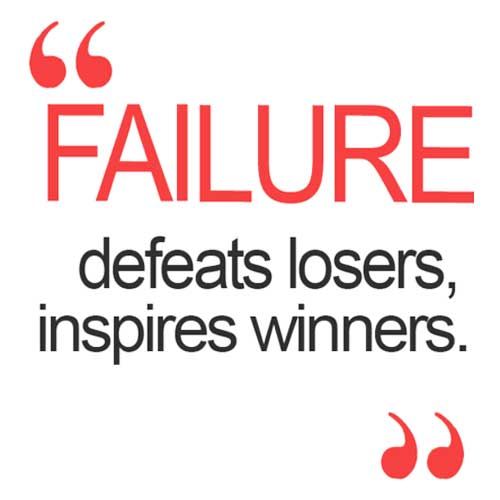
by Julia Felton | Mar 17, 2015
Thomas J. Watson, the founder and first president of IBM said: “Failure is a teacher – a harsh one, perhaps, but the best… That’s what I have to do when an idea backfires or a sales program fails. You’ve got to put failure to work for you … you can be discouraged by failure or you can learn from it. So go ahead and make mistakes. Make all you can. Because that’s where you will find success. On the far side of failure.”
I know when I was starting out in business I used to dread getting things wrong and having projects fail. I used to think that failure was something bad, to be avoided, but along the way I have begun to realise that my best lessons are learnt when I try something and it doesn’t turn out as planned. In effect I’ve failed but the feedback I get is priceless and it helps me calibrate my offering and do something different.
Recently I read an article about the African impala. They can jump to a height of over 10 feet and cover a distance of greater than 30 feet and yet these magnificent creatures can be kept in an enclosure in any zoo with a 3 foot wall. The reason is that these animals will not jump if they cannot see where their feet will land.
This is a lot like humans. Many of us will not live up to our full potential and achieve all we want to as we are afraid to take a risk. We are afraid to fail as society has conditioned us that failure is bad. That was certainly the messaging that I got as a chlld, however failure can be one more step on your road to success – you just have to turn it around in a positive direction. Failure can push you harder to succeed. Failure can strengthen your determination to overcome obstacles. Failure can make you braver in the face of opposition. Failure can help you learn what you need to do in order to succeed. Failure can teach you what your limitations are – and your strengths. Failure can encourage you to change your strategy.
“Failure is not an option” became a popular catchphrase after the release of the movie Apollo 13. Failure happens, but when you’re responsible for the people working for you, you have to do everything you can to guard against it.
As a leader, devote yourself to avoiding these crucial failures in leadership.
- Disconnecting from people. Don’t get so caught up in strategy and planning that you forget to talk to the people who work for you. Most of the time, they know more than you about how things work from the ground level, and their insights can be invaluable.
- Doing too much. Delegate appropriately so you don’t get overwhelmed and lose sight of the big picture. When you hire, look for people who can perform aspects of your job as well as or better than you can. Your role is complicated enough without adding tasks that your team should be able to handle.
- Avoiding risk. Play it safe, and your organization will never grow. That doesn’t mean being foolhardy with your organization’s assets. Seek opportunities everywhere, and be willing to commit resources wherever you’ve got a reasonable chance of success.
- Exhaustion. Take care of yourself, physically and mentally. Eat well, exercise, and take time off so you can stay fresh as you confront the day’s challenges. Pushing yourself to the brink will only increase everyone’s anxiety.
- Falling in love with authority. You’re the boss, not a monarch ruling by birthright. Don’t rely on your title, and the volume of your voice, to get employees to do what you want. Base your decisions on your experience and judgment, and be willing to listen to other points of view instead of assuming that only you know what’s right.
When J. K. Rowling, author of the phenomenally successful Harry Potter series, had been out of college for seven years, she found herself at a dark juncture in her life. At that time, she says, she had failed in life on an epic scale. “An exceptionally short-lived marriage had imploded. I was jobless, a lone parent, and as poor as it is possible to be in modern Britain without being homeless.”
In short, Rowling says she was the biggest failure she knew. And while she says there is nothing ennobling about being poor, she believes she reaped benefits from her failures. Failure, she says, stripped away all the inessential aspects of her life. She stopped pretending to be anything other than herself, and it was then that she began to earnestly pursue the only work that mattered to her. It was not, she says, the fairy-tale transformation to success so often written about her in the media.
And one thing I have learnt is that becoming successful – whatever that means for you – is never something that happens overnight. Despite all the media hype success takes hard work because it takes 10,000 hours to perfect your craft. So imagine the opportunity for failure along the way and embrace this and learn from the experience because this will help accelerate your success.
So what leaps of faith will you take today to move your business to the next level?

by Julia Felton | Feb 24, 2015
In a recent article the Harvard Business Review cited the following as traits of innovative leaders. I’m curious what you think about these traits and are there any you would add.
Many organisations would like their leaders to create more innovative teams. But how exactly should they do this? Most highly innovative leaders can often find it difficult to pinpoint what accounts for their skill. Research carried out by US –based leadership development consultants Jack Zenger and Joseph Folkman identified 10 distinctive behaviours that set innovative leaders apart.
These leaders:
- Display excellent strategic vision. The most effective innovation leaders could vividly describe their vision of the future
- Have a strong customer focus. They networked with clients and asked incessant questions about their needs and wants.
- Create a climate of reciprocal trust. They initiated warm, collaborative relationships with the innovators who worked for them.
- Display fearless loyalty to doing what’s right for the organisation and customer. Pleasing the boss took a back seat to doing the right thing for the project.
- Put their faith in a culture that magnifies upward communication. These leaders were often described as projecting optimism, full of energy, and always receptive to new ideas.
- Are persuasive. They presented ideas with enthusiasm and conviction, and the team willingly followed.
- Excel at setting stretch goals. They set goals that required people to go far beyond just working harder but required that they find new ways to achieve a high goal.
- Emphasize speed. These leaders believed that experiments and rapid prototypes were preferred to lengthy studies by large committees.
- Are candid in their communication. These leaders were described as providing honest, and at times blunt, feedback.
- Inspire and motivate through action. This comes from a clear sense of purpose and meaning in the work.
So do you have the skills and mindset as a leader to create innovative teams? I’d love to hear if you’d focus on anything different.














